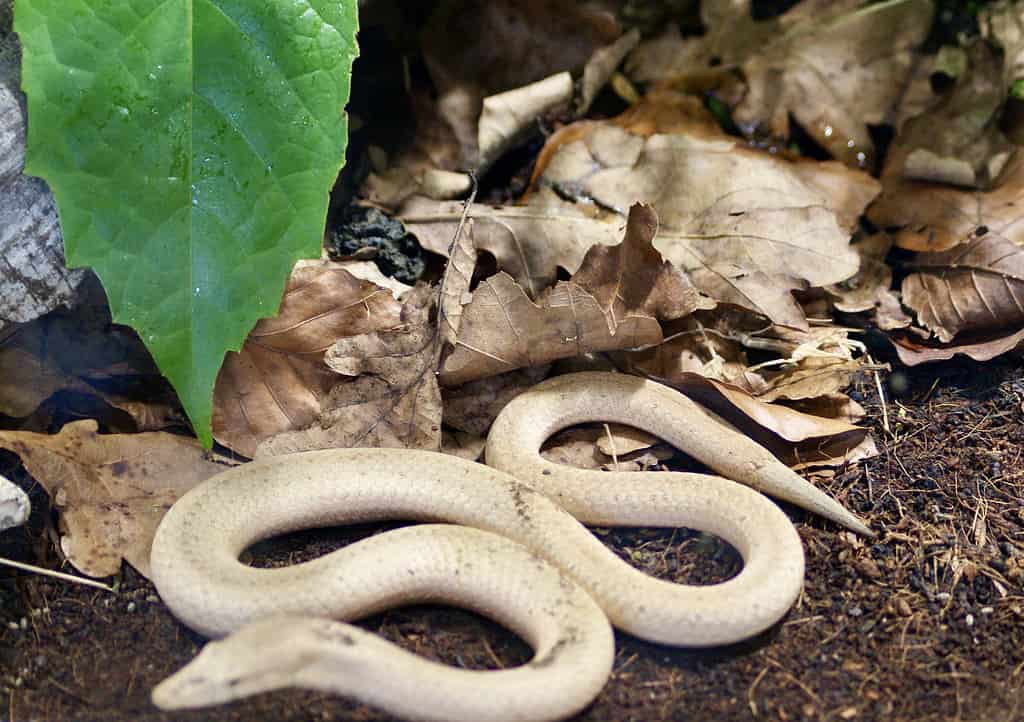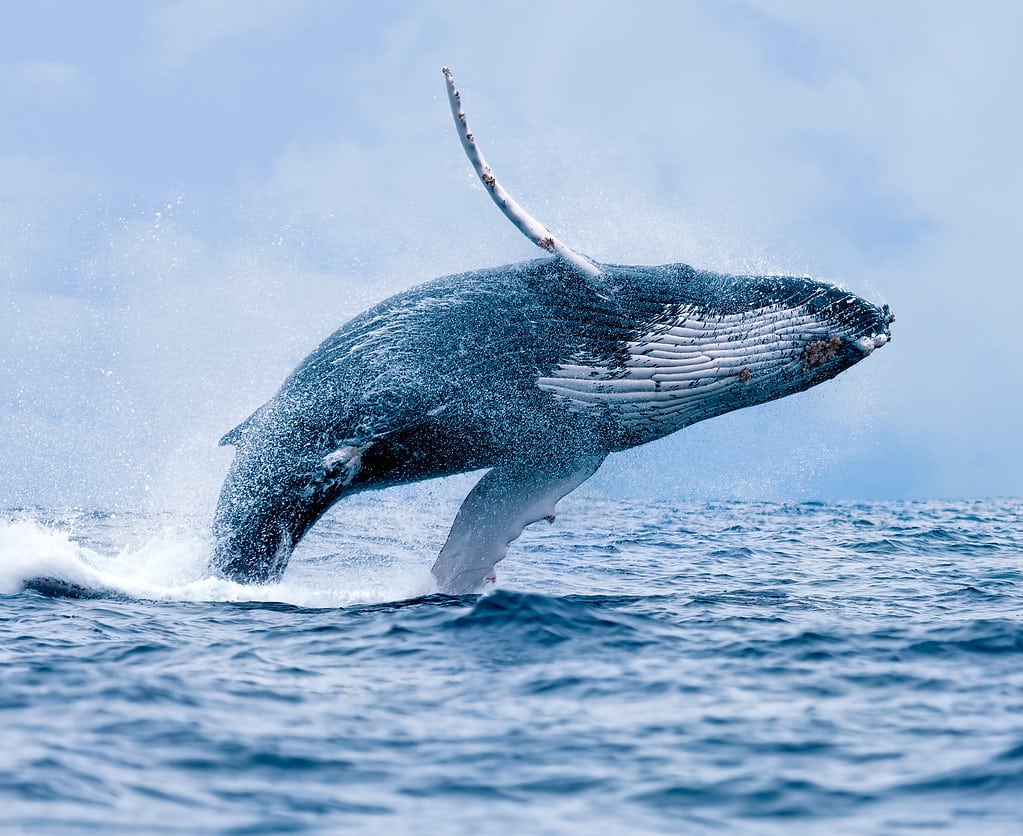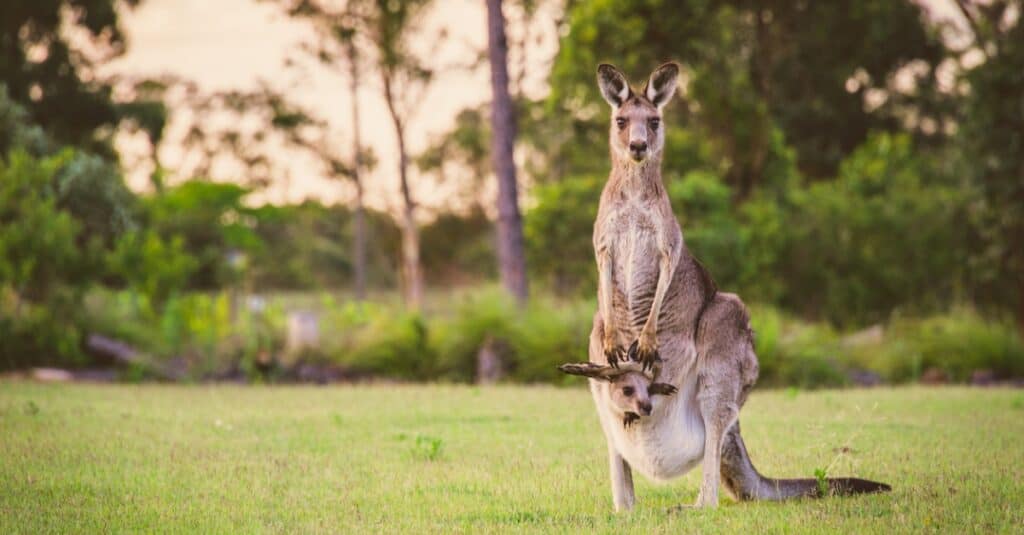
Humans and apes evolved from a similar ancestor.
©stanciuc/iStock via Getty Images
Convergent evolution is a common term in science fields. It’s also something something that might pop up occasionally in documentaries or articles about wildlife, leaving readers confused. Unfortunately, it isn’t the easiest topic to explain and may leave people not deeply familiar with biology and evolutionary trees lost.
While it is a complicated term, it’s relatively easy to understand when you look at some of the more key examples. Biologists are still struggling to get the exact definition down, and which animals display examples of it, so the term is one that regularly evolves. However, if you want a basic understanding of the term and some core examples to help you comprehend the definition better, keep reading below.
What Is Convergent Evolution?
According to the Encyclopedia of Biodiversity (Second Edition) published in 2001 by Robert S. Steneck, convergent evolution is when “Distant or unrelated organisms evolve the same anatomical, morphological body plan characteristics, or ecological function.”
Convergent evolution is the term given to a type of evolution where similar traits are developed in two different species. To put it in simpler terms, when two animals look alike or behave similarly, and they aren’t related, it’s likely an example of convergent evolution.
While scientists agree on the basic premise of convergent evolution (the fact that it’s the development of what looks to be the same characteristic in different species), the method that this evolution comes about in genetics is often disagreed about.
Requirements for Convergent Evolution
To be considered convergent evolution, the animals have to be not at all closely related, and the traits must independently evolve. Though all animals have a common ancestor at some point, the trait that’s evolved must be new enough that it can’t be attributed to this common ancestor. For example, fingers in people and apes cannot be considered convergent evolution, because our common ancestor also had them.
But bats and birds developing wings can count as convergent evolution because their common ancestor didn’t have them. Plus, the animals closely related to bats do not have wings, which means that this feature cannot be attributed to a common ancestor.
Convergent evolution has led to a lot of problems in the past. When evolution and animal trees were made based on appearances and traits, it caused animals that looked similar but weren’t to be placed together on the tree when they should be rather far apart.
Even today, it makes for some confusion. Until detailed DNA sequencing is done on two species, it’s easy for scientists to see two animals that look and behave similarly and take that to mean they are related. This is one of the reasons the species and genus names change around every so often.
What Causes Convergent Evolution?

Animals living in the ocean tend to develop analogous traits.
©Jason Benz Bennee/Shutterstock.com
Convergent evolution is a natural process. It comes about for one of two main reasons. The first is that two animals have to fill the same specific niche. They may have to develop similar characteristics to best fit these roles. For example, some animals may look or behave similarly because they have to fill the apex predator niche.
Other animals may live in different parts of the world but in similar habitats. Animals that live in the same habitat near each other can also develop convergent evolutionary traits, such as animals in the ocean.
Because their habitats are similar, animals may need comparable characteristics to survive. This leads to two animals having almost identical appearances because it’s what worked best for survival. Animals living in deserts often have similar appearances and characteristics, even if they aren’t closely related.
Will Convergent Evolution Always Happen?
Interestingly, it is thought that convergent evolution will always happen. It happens so naturally in evolution that it’s considered to be found everywhere throughout the world and is a huge part of life on Earth.
Scientists are still learning about convergent evolution and what exactly it entails, but none of them disagree that it’s part of evolution as they know it. It seems feasible that convergent evolution isn’t likely to disappear at any point in the near future.
Does Convergent Evolution Only Occur in Animals?
Convergent evolution can happen any time there is evolution. This means that plants, microorganisms, fungi, and humans (if you don’t want to lump them in with animals) all exhibit characteristics of convergent evolution.
In fact, some common characteristics evolve in humans and animals. For example, people who adapt to high altitudes exhibit the same evolutionary changes as animals in high altitudes. Social changes and growth may also be a form of convergent evolution. While animals also do it, it’s easier to see a comparable social structure developed among humans in different parts of the world. Social behaviors are also a form of convergent evolution. Language, writing, patriarchal hierarchies, and farming all can count as convergent evolution.
However, there is debate on whether humans can have convergent evolution with other humans, as they all share a common ancestor. This would mean it might arguably be closer to parallel evolution than convergent evolution.
Flower shapes, colors, and seasonal blooms also occur as a form of convergent evolution in plants.
Examples of Convergent Evolution
If you’re still confused about how convergent evolution works, here are a few common and prime examples to help you understand the differences.
Wings

Wings are a perfect example of convergent evolution
©Luke Marcos Imbong / CC BY-SA 4.0 – License
One of the most common examples provided for convergent evolution is flight. Though birds, bats, and insects aren’t at all closely related, they have all developed wings of some form. In fact, these animals couldn’t be more different from each other.
A bald eagle, a fruit bat, and a honey bee don’t share a lot of other genetic similarities. One is an insect, one a bird, and one a mammal. However, they all developed wings to help them fill a niche that other animals weren’t filling.
Dolphins and Sharks

Dolphins can look similar to sharks from a distance, and share many characteristics.
©Cory Fults/Shutterstock.com
On the surface, dolphins and sharks may look like they are closely related. They both swim in the water, have similar body shapes and colors, and are often found in the same areas of the ocean. However, if you know anything about marine animals, you will realize that sharks are technically fish while dolphins are mammals.
They have distinct differences, such as sharks having cartilage instead of bone and gills, while dolphins have a bone skeleton and use a blowhole to breathe air at the surface of the ocean.
Their similarities are due to their niches and their similar habitats. They both need to be fast to chase after prey. Their similar coloring also comes from hunting. Their color helps them blend in with the water more so that their prey won’t see them. Because of this, they both developed agile body shapes and now look fairly similar on the surface despite not having a recent common ancestor.
Legless Lizards and Snakes

Can you tell the difference between a legless lizard and a snake?
©NasserHalaweh / CC BY-SA 4.0 – License
Many people confuse legless lizards for snakes. You can’t blame them. On the surface, they look pretty similar. They are scaly reptiles with no appendages that slither around. However, they are quite different animals altogether.
For one, snakes tend to have flexible skulls, whereas legless lizards and lizards as a whole have more rigid skulls. Additionally, lizards have eyelids and ear holes. At least, most of them do. Snakes don’t have either.
Legless lizards also have the common trait many associate with lizards. When threatened, they will lose their tail to distract predators so they can run away. Snakes, on the other hand, cannot do this.
Despite all of these differences, a legless lizard and a snake share similarities in the way they move and the way they look, which is why they are great examples of convergent evolution.
Convergent vs. Divergent Evolution

Whales have slightly different forelimbs than other mammals.
©PaulWolf/iStock via Getty Images
Convergent and divergent evolution may sound similar, but they are actually very distinct forms of evolution.
As established, convergent evolution is when two already distinct species share similar traits for the reason of filling a similar niche or living in a similar, or the same, habitat.
Divergent evolution, on the other hand, is when two species come from a similar ancestor. They often appear and behave very similarly. Then, for whatever reason, they start to evolve separately. Each starts to develop different characteristics. Eventually, these two animals, while closely related, start to look and appear vastly different from one another.
A great example of divergent evolution are whales, bats, and bears. They share a similar common ancestor that had forelimbs (the front limbs or legs of animals). and they even share the same bones in their forelimbs.
However, over time, these forelimbs have turned to look vastly different. A bat’s forelimb bones are what create their wings. Bears have more standard forelimbs than you’d expect to see in a mammal. In whales, their forelimbs are their front flippers.
This change in forelimbs is a great example of divergent evolution. As you can see from the examples above, convergent and divergent evolution are very different from one another.
Convergent vs. Parallel Evolution

Marsupial animals are the best example of parallel evolution, though the term is still confusing.
©iStock.com/Andrew Coleman
Parallel evolution is when two species that come from a common ancestor start to evolve. Instead of evolving in different ways, like with divergent evolution, the two animals evolve in such a way that they are still as similar to one another as their ancestors were.
Sometimes, the species may move away from each other for a while in terms of appearance and characteristics, but they come back together at some point. Since these two species can start off following divergent evolution, and come back together, it’s not always easy to tell it apart from convergent evolution. It’s so confusing that people often mix up the two terms. Even scientists have a hard time determining if some traits are from convergent or parallel evolution.
Sometimes, parallel evolution is given a different definition, further confusing the two. Some definitions of parallel evolution say that it is when two unrelated species develop similar traits because of living in the same habitat, whereas convergent evolution develops similar traits even though they are in different environments.
Examples of Parallel Evolution
While some people do use the above definition, the first is still the more common one. The most common example of parallel evolution is marsupials in Australia. Australia was once connected to other lands, but eventually split off. This caused the animals there to develop differently. Despite that, the mammals in Australia and their counterparts across the world have a lot of similarities.
There are a few different types of marsupials. Some of the common ones are the marsupial mole, marsupial anteater, marsupial mouse, the Tasmanian tiger cat, and the Tasmanian wolf. The flying phalanger is also an example.
So why are these examples of parallel evolution? Because these species, despite being isolated and having marsupial pouches, still look a lot like their counterparts with a common ancestor. The marsupial mole looks and behaves similarly to any mole you’d find elsewhere in the world. The anteater and the marsupial anteater both have the same diet and fairly similar characteristics. A flying squirrel and a flying phalanger are both flying rodents that developed flight independently, but come from a common ancestor.
Difficulties With Parallel Evolution Terms
One of the issues that comes with differentiating convergent evolution and parallel evolution is that, technically, every animal shares a common ancestor with one another somewhere down the line. So it’s hard to mark when traits are growing independently from each other, or when two similar species are coming back together.
The photo featured at the top of this post is © Rudmer Zwerver/Shutterstock.com
Thank you for reading! Have some feedback for us? Contact the AZ Animals editorial team.






